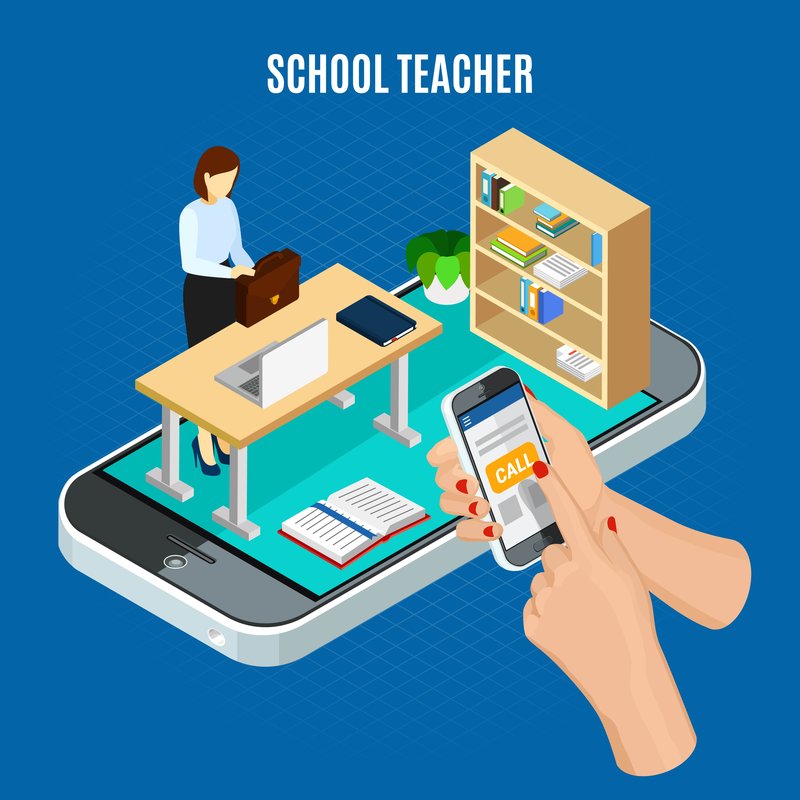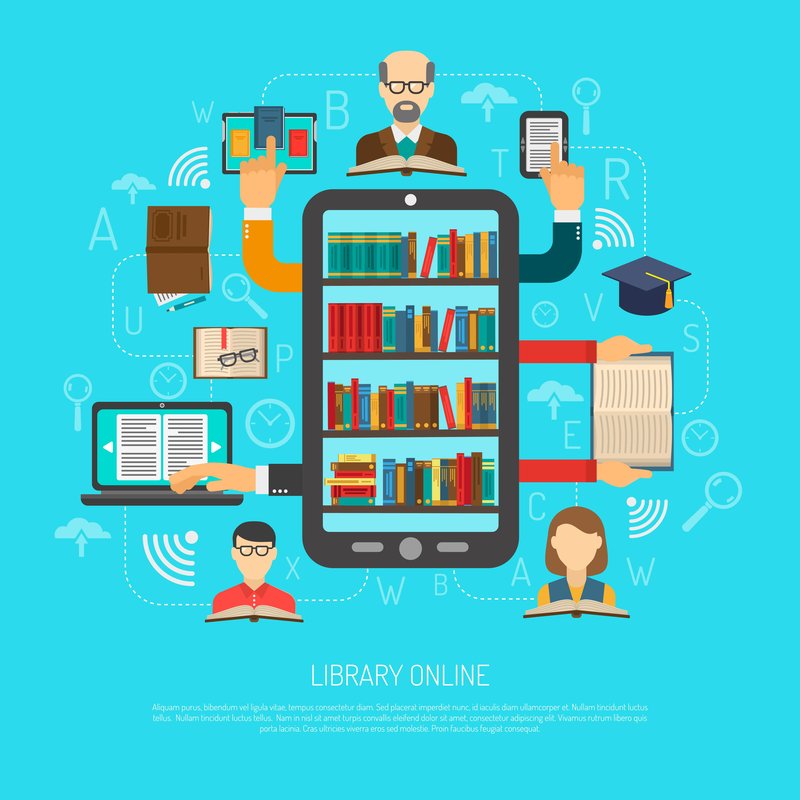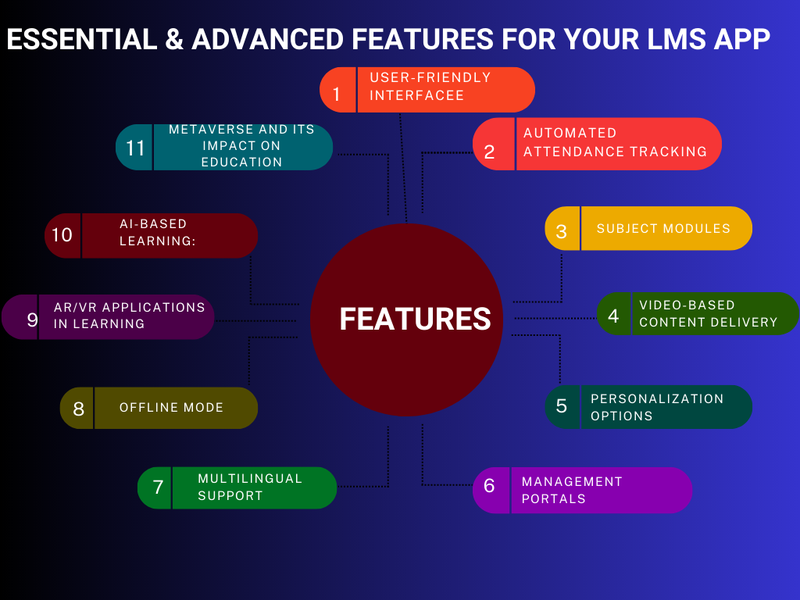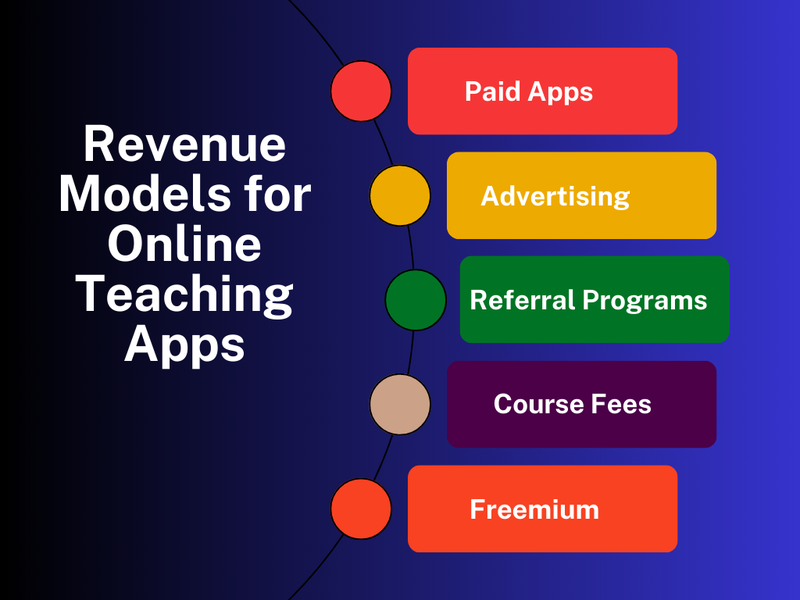Build an LMS App: Easy Steps to Success
Hey there! Welcome to the exciting world of e-learning and learning management system (LMS) mobile apps. You know, in today's fast-paced digital era, the demand for LMS apps is skyrocketing! And guess what? You're in the right place because I'm about to share some fantastic insights with you. Whether you're a tech enthusiast, software developer, or professional looking to create your own LMS app, this blog is tailor-made for you.

We'll dive deep into the benefits of customizing your app to meet specific needs. So, let's get started on this incredible journey of app development together!
Understanding LMS Apps and Their Benefits
E-learning App Market Statistics:
Let's take a closer look at the e-learning industry. Did you know that recent statistics show a massive surge in its growth? With advancements in technology and the need for flexible learning options, the e-learning market is booming!
- The global e-learning market is projected to reach $374.3 billion by 2026, growing at a CAGR of 14.6% from 2021 to 2026. [Source: GlobeNewsWire]
- The e-learning platforms caused a 42% rise in business for US organizations. [Source: Thrivemyway]
- Distance learning uses 90% less energy than campus-based instruction and emits 85% less CO2 emissions per student.[Source: The Open University in Britain]
- 70% of students agree that online classes are better than traditional classroom settings (Source: University of the Potomac)
- Gamification in e-learning has proven to increase engagement and motivation. A study found that gamified elements in e-learning courses resulted in a 14% increase in skill-based knowledge retention and a 9% increase in factual knowledge retention. [Source]
The Benefits of Using LMS Apps:
There are so many perks to using LMS apps! Imagine having different learning methods at your fingertips, from interactive videos to quizzes.
- Plus, LMS apps offer flexibility, allowing you to learn at your own pace and convenience.

- You can also enjoy enhanced parent-teacher communication, ensuring everyone stays on the same page.

- Oh, and let's not forget about the personalized learning experience and easy access to e-books!

Essential & Advanced Features for Your LMS App
When it comes to building an outstanding LMS app, certain features are essential to delivering a seamless and enriching learning experience.

Here's a comprehensive list of must-have features that will make your LMS app stand out:
User-friendly Interface: A user-friendly interface ensures easy navigation and accessibility for both teachers and students. Intuitive design elements and a clear layout enhance the overall user experience.
Automated Attendance Tracking: Simplify attendance management for teachers and learners by implementing automated attendance tracking. This feature saves time and effort while maintaining accurate attendance records.
Subject Modules: Organize courses into subject modules to provide a structured learning path. This helps learners navigate through different topics and modules systematically.
Video-based Content Delivery: Harness the power of video to make learning more engaging and interactive. Incorporate video lessons, tutorials, and demonstrations to enhance comprehension and retention.
Personalization Options: Empower learners with personalized learning experiences. Incorporate features that allow users to set preferences, track progress, and receive tailored recommendations based on their learning goals and performance.
Management Portals: Provide dedicated management portals for administrators, teachers, and students. These portals enable efficient course creation, content management, progress tracking, and communication between stakeholders.
Multilingual Support: Cater to a diverse user base by offering multilingual support. This allows learners from different regions and language backgrounds to access content in their preferred language.
Offline Mode: Enable learners to access course materials even without an internet connection. Offline mode ensures uninterrupted learning, making it convenient for users who may have limited or intermittent internet access.
AR/VR Applications in Learning: Immerse learners in a world of augmented reality (AR) and virtual reality (VR) to enhance their learning experience. AR/VR technologies offer interactive simulations, 3D models, and virtual field trips, making complex concepts more tangible and engaging.
AI-based Learning: Explore the potential of artificial intelligence (AI) in personalized learning. AI algorithms can analyze learner data, provide intelligent assessments, and adapt content delivery based on individual strengths, weaknesses, and learning styles.
Metaverse and its Impact on Education: Step into the future with the concept of the metaverse. The metaverse presents a virtual shared space where learners can collaborate, explore immersive environments, and engage in interactive educational experiences.
By incorporating these cutting-edge trends into your LMS app, you can provide learners with a dynamic and innovative learning journey that keeps them motivated and excited to learn.
Steps to Building an LMS App
Building an LMS app requires careful planning and execution.

Let's dive into the step-by-step process to guide you through creating your own successful LMS app.
Choose Your Niche:
Selecting a niche helps you define your target audience and focus on specific subject areas. Whether it's language learning, professional development, or academic courses, narrowing down your niche ensures you cater to the specific needs of your users.
Research and Planning:
Conduct thorough market research to understand the demand, competition, and user preferences. This information will guide your app development strategy. Create a solid plan outlining the app's features, functionalities, and monetization strategy.
Project Timeline and Goals:
Setting realistic timelines and achievable goals is crucial for successful app development. Break down your project into milestones and establish clear objectives to keep the development process on track.
Select Features:
Determine the features that align with your target audience's needs and preferences. Focus on core functionalities like course management, assessments, progress tracking, and interactive content delivery. Tailor the features to provide a unique and valuable learning experience.
UX/UI Design:
User experience (UX) and user interface (UI) design play a vital role in engaging and retaining users. Create an intuitive and visually appealing interface that makes navigation seamless. Consider user feedback and conduct usability testing to refine the design.
Tech Stack for Educational App:
Choose a suitable technology stack for your LMS app to ensure scalability, security, and performance. Consider frameworks like React Native or Flutter for cross-platform development and robust backend technologies like Node.js or Ruby on Rails.
Create an MVP:
Develop a Minimum Viable Product (MVP) to validate your app's concept and gather user feedback early on. This allows you to test key features, gather insights, and make necessary improvements before investing heavily in full app development.
Testing and Deployment:
Thoroughly test your app to identify and fix any bugs or issues. Prioritize user experience, performance, and security testing. Once you're confident in the app's stability, deploy it to your target platforms, such as iOS and Android, and make it available to your users
Revenue Models for Online Teaching Apps
Making money from your online teaching app is crucial for sustainability and growth.

Let's explore some popular revenue models that can help you monetize your LMS app effectively.
- Paid Apps:
One way to generate revenue is by offering your app as a paid download. Users pay a one-time fee to access the app's features and content. This model works well when you provide high-quality, valuable content and a seamless user experience.
- Advertising:
Another revenue model is through advertising. You can partner with relevant brands or display targeted ads within your app. However, be mindful of maintaining a balance between user experience and ad placement to avoid overwhelming your users with excessive ads.
- Referral Programs:
Implementing a referral program can incentivize users to promote your app to others. Offer rewards or discounts to users who successfully refer new users to your app. This not only helps with user acquisition but also fosters a sense of community and loyalty among your users.
- Course Fees:
If your app offers premium courses or specialized content, you can charge fees for accessing those specific resources. This model works well when you provide high-value, in-depth courses that cater to a niche audience.
- Freemium:
The freemium model offers a basic version of your app for free, allowing users to experience its core features. You can then offer additional premium features or content for a fee. This approach helps attract a larger user base while providing opportunities for upselling premium offerings.
Choosing the right revenue model for your LMS app depends on factors such as your target audience, app features, and overall business goals. Consider experimenting with different models and gathering user feedback to refine your approach over time.
Necessary Tech Stack for Creating an LMS App
To create a robust and efficient LMS app, it's essential to choose the right technology stack. Here's a breakdown of the recommended tech stack for developing your LMS app, including both the app and it's web front-end and back-end components.
- For app development, consider using frameworks like React Native or Flutter for cross-platform compatibility. These frameworks allow you to build the app for both iOS and Android platforms, reducing development time and effort.
- For the web front end, popular choices include HTML, CSS, and JavaScript frameworks like React or Angular. These frameworks provide a rich and interactive user interface, ensuring a seamless learning experience for your users.
- For the web back end, you can opt for technologies like Node.js or Ruby on Rails. These frameworks offer scalability and robustness, allowing you to handle user authentication, database management, and API integrations efficiently.
By leveraging the right tech stack, you can create a powerful and scalable LMS app that meets the needs of your users and provides a seamless learning experience.
Cost of Developing an LMS App
Developing an LMS app involves various factors that influence the overall cost. Factors such as the complexity of features, design requirements, development team size, and location play a significant role in determining the cost.
Complex features like interactive assessments, gamification elements, or integration with third-party tools can increase development costs. Design requirements for creating an intuitive and visually appealing interface also impact the budget.
Development team size and location can affect the cost as well. Hiring a larger team or choosing developers from regions with higher rates may increase the overall expenses.
On average, the cost of developing an LMS app can range from $15,000 to $50,000, depending on the project scope and requirements. It's crucial to consider the long-term maintenance and updates in your budget planning to ensure the app's continuous improvement and scalability.
By understanding the factors that influence the cost and considering long-term maintenance, you can budget effectively and ensure a successful LMS app development journey.
Decodermind s Role in Your App Development Journey
Decodermind is your trusted partner in LMS app development. With their expertise and successful projects, they guide you from ideation to launch. Collaborating with their skilled team saves time, ensures quality, and delivers innovative solutions tailored to your needs. Trust Decodermind for a seamless app development experience.
Conclusion:
In conclusion, developing a learning management system (LMS) mobile app opens up endless opportunities in the education sector. By customizing your app to meet specific needs, you can revolutionize the way people learn.
So, why wait?
Take the leap, empower learners, and shape the future of education with your own LMS app. The possibilities are limitless. Let's embark on this exciting journey together!

 Hamid Salman
Hamid Salman